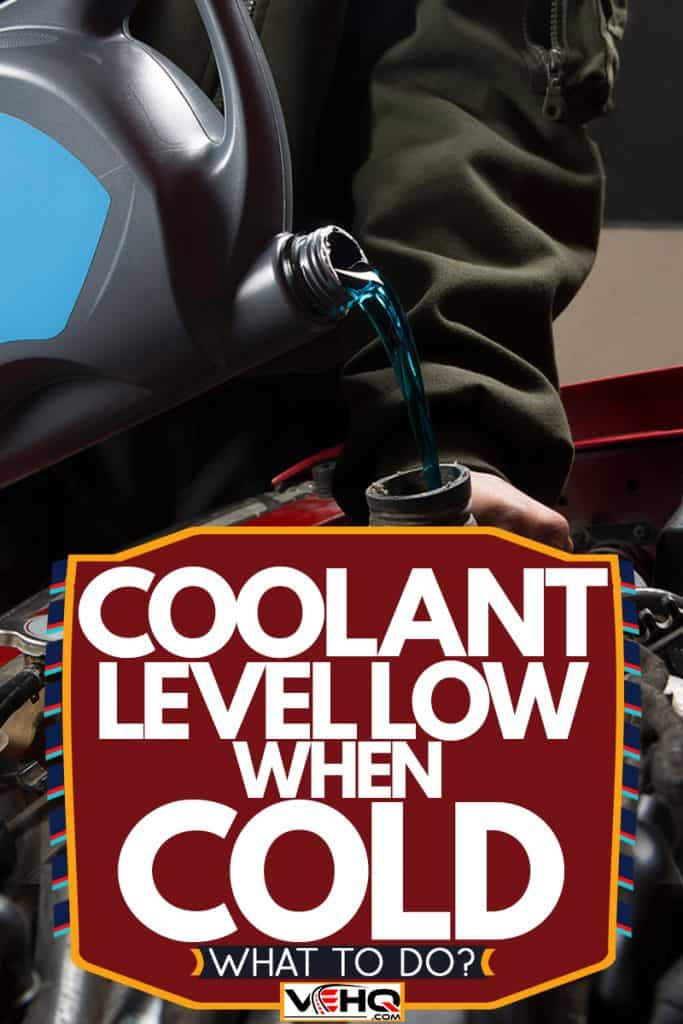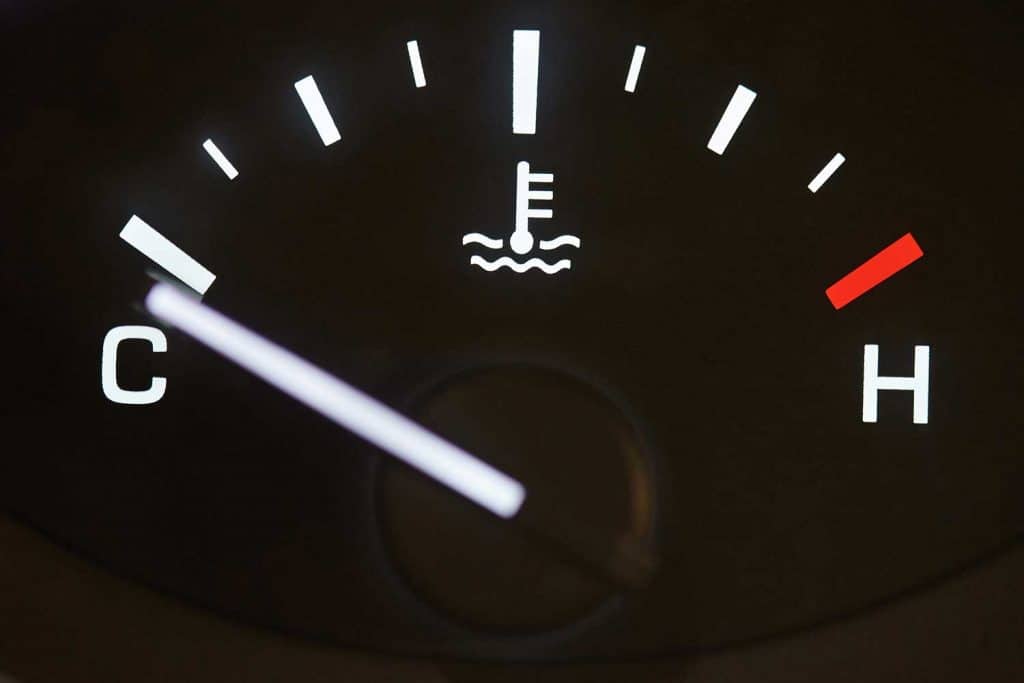Have you noticed your coolant light turn on recently? Is it also starting to get cold where you live? The two may be connected. We have researched this very topic, so you can find out what to do the next time your low coolant warning light turns on when it is cold outside.
Coolant is essential to your car's function. It prevents the engine from overheating or freezing. Low coolant means there is a higher chance your car's engine could malfunction, so it is essential you fix this problem right away.
You should:
- Stop driving and turn your car off.
- Check your coolant level.
- Top up the coolant if needed
- If the warning light stays on, take your car to a mechanic.
Keep in mind low temperatures may affect your car's coolant level gauge. Coolant particles contract in cold weather. So, in some circumstances, a few freezing days in a row may trigger your car's low coolant system. If the light turns off after the engine warms up, you probably have nothing to worry about.
We know how frightening it is when any of your dashboard lights turn on unexpectedly. So if this is happening to you with your coolant light, you probably have more questions. Keep reading to learn more about low coolant levels and what to do.

What Is Coolant?
Coolant, frequently called antifreeze, is a vital fluid to your car. It helps regulate the temperature of the engine system while transferring heat. You can thank coolant for keeping the engine cool in hot weather and preventing the engine from freezing during cold weather.
It also serves as a lubricating agent to prevent wear and tear in the engine and cooling circuit.
Why Did My Coolant Light Turn On?
There are a few reasons why your coolant level sensor triggered the warning light to activate.
Cold Temperatures
Coolant has a high percentage of water in it, so temperature affects it more than some other car fluids. The lower the external temperature, the more coolant particles contract. Sometimes, this is enough to lower coolant levels and trigger the sensor. This is especially likely if your vehicle has been sitting outside for days without use during the winter months.
Usually, the light will turn off once your car heats up, and the coolant expands back to normal. If the light continues to stay on even after a long-distance drive, there may be a more serious issue.
Leaks
A leak is the most common reason for low coolant. A leak in the reservoir or somewhere else in the line can cause coolant levels to drop. Leaks can happen in any part of the cooling circuit that the fluid flows through, like the radiator or water pump. These leaks can be severe and need to be fixed immediately.
Check out this blog post about driving your car with a coolant leak for more information.
Sensory Malfunction
You may not have a coolant problem at all. It is very common for a car's sensory to have issues. If your car's computer is receiving incorrect information, it can send a signal to trigger the warning light. If your light keeps turning on and off and your coolant doesn't appear to be low when you check it, then this is most likely your issue.
What To Do When My Low Coolant Warning Turns On?
Here is a list of step you should take if you notice your coolant warning light activate:
1. Turn Your Car Off
If you are driving and you notice your low coolant light turn on, you should find a safe place to park your vehicle as soon as possible. Then, turn your engine off. Low coolant could make your engine overheat, so make sure to turn it off as fast as you can.
2. Check Your Coolant Level
It is best to wait for your engine to cool down before you check your coolant level. A few hours is best, but under extreme circumstances, you can check it sooner.
Most vehicles have a plastic coolant reservoir attached to the cooling system. This is where you put coolant in and where you can check the coolant level. If you are unsure of where to locate this part, consult your vehicle's manual.
The coolant reservoir will have a minimum level and maximum level mark. Check to see that the coolant is between these two marks.
3. Top Off
Once you have opened the hood to check your coolant level and discover that your coolant is low, you need to top it off before driving again.
If you don't already have coolant in your vehicle, you will need to buy some. It is important to note that coolant is also known as antifreeze.
If you have concentrated coolant/antifreeze, you will need to dilute it with water. The standard ratio is 50:50. You may want a 70:30 ratio in frigid environments, so there is more coolant than water.
Zerex Extended Life Antifreeze
Here is a durable antifreeze that should last you up to three years. This would be a great coolant to keep in your trunk, so you know it is always there in emergencies.
Click here to see it on Amazon.
Valvoline Multi-Vehicle Coolant
This multi-vehicle coolant comes in a concentrated or ready-to-use solution. No matter what kind of car you have, this is sure to help you out when you need it.
Click here to view it on Amazon.
Once you have the correct diluted coolant, use a funnel to top up the reservoir until the coolant level is between the minimum and maximum lines.
4. If Problems Continue, Take Your Car To The Mechanic
If the warning light stays on after you top up or your coolant level is low again after a few days, take your vehicle to the mechanic.
You could have a more serious problem like a leak or sensor malfunction. A professional will be able to diagnose your car problem and help you fix it.
Does The Engine Need To Be Cold To Add Coolant?
Yes, the engine needs to be cool when you add coolant. Removing the coolant reservoir cap while the engine is still hot can result in injury.
Can You Drive With Low Coolant?

You can drive with low coolant, but this is not smart. Of course, if your coolant is low and you need to drive a few miles to get your car to the mechanic, that is okay. But, if you know you have low coolant and continue to drive your vehicle like nothing is wrong, it is only a matter of time before you damage your vehicle.
To learn more about driving with low engine coolant, check out this blog post.
How Long Can You Run An Engine Without Coolant?
You could only run an engine for a few minutes without coolant before it overheats and is at risk for serious damage. As stated above, coolant is vital to a properly functioning engine.
Can You Use Water Instead Of Coolant In An Emergency?
In an emergency, you could top off your coolant with water. For example, if your engine is overheating, but you need to drive to the mechanic, you could add distilled water to the radiator. It can be enough to get your car to a safer location.
It is important to note that adding water instead of coolant is not recommended. Water has a lower boiling point than the coolant. When you add pure water to the coolant reservoir, you lower the liquid's boiling point inside. Cool water may help you drive a few miles, but it is not a permanent solution.
If you add water to your coolant reservoir, you should get the cooling system flushed as soon as possible. The system needs to be flushed to ensure the correct amount of coolant goes back into your car.
Don't Ignore Low Coolant Levels
Your coolant may be low for a few reasons, and it is always best to take your vehicle to the mechanic if low coolant levels persist. Sometimes a low coolant level in freezing temperatures is nothing to worry about. However, you should never ignore a warning light on your dashboard.
Be prepared and keep a bottle of coolant in your car for emergencies. It may save you from being stranded in the cold.


